Jet Engine “Soyuz Ru19A-300”
Once again a remarkable day was friday, 05/09/2003. Jürgen, after having built his model helicopter turbine and still busy with it, always wished to get hold of a “real” turbine engine. After my deal with the TS-21 units was delayed by at least several months, I stumbled across another opportunity. I got the information from one of my “sources” that several APUs from Antonov An-26 turboprop transport aircrafts would become available. My first thought was “should I really get another APU while already owning a few” but then I decided to at least gather some information about it. Quickly it became obvious that this “APU” is something never to be found in the western hemisphere. Actually it is a (relatively...) small turbojet that’s used in the Yak-30 and 32 jet trainers, only modified by adding a more sophisticated fuel control system and a powerful starter/generator to supply sufficient electricity to the aircraft. The APU is mounted in the aircraft’s right nacelle directly behind the turboprop main engine. The clou is that the Ru19A-300 has got its thrust nozzle installed and during takeoff and and steep climb of the aircraft it adds about 900daN (about 2000lbs) of propulsive thrust. A very peculiar engine that is probably worth a deal. I decided to obtain one of these units, too, even though this engine is beyond my usual weight/size limits, but maybe I’ll trade it for another, smaller machine...
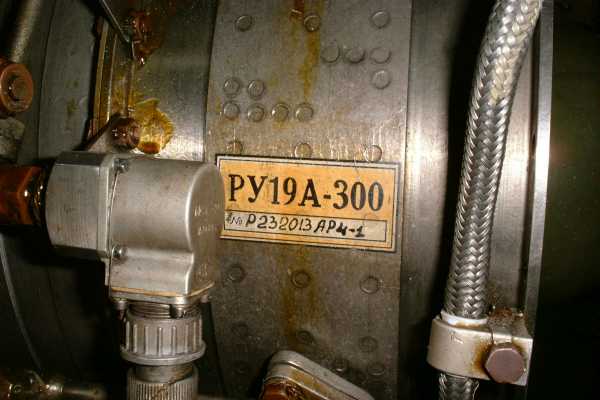 |
And here’s the “name of the game”. Notice that the cyrillic “P” is our “R” and the “y” is a “u”.
So after a real telephone odyssee and several cancelled dates (not our fault...) we finally arranged a meeting. Since the company we got the engines from had to deliver a Mi-2 helicopter to a place in northern Germany (photos farther below), we were able do without a trip all the way to Poland. So at that certain friday, we hooked up Jürgen’s trailer to his car and headed towards the border to the Netherlands. We found the place without any problems. But having a look at the engines for the first time, we were a little astonished about their size and massiveity. I already knew their dimensions from the technical specs but in reality they are some hefty pieces of machinery.
 |
Here you see the two engines arranged back-to-back, as we found them. We were really lucky that a fork lift was available at that place.
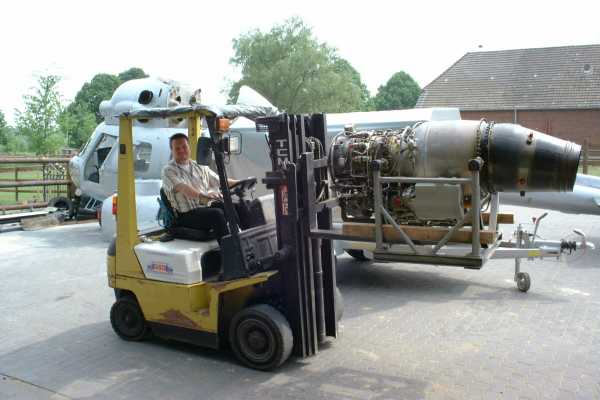 |
Here Jürgen is riding the fork lift to “thread” the engine in his car. It came in quite handy that he is familiar with using such tools from his former job where he needed to transport heavy goods now and then. In the background there’s the helicopter fuselage.
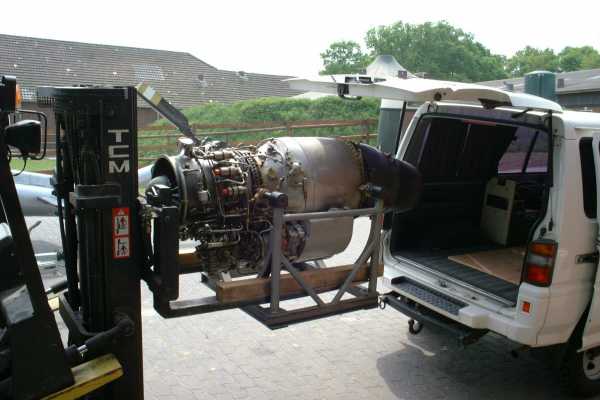 |
Almost there... Once again we had lots of luck that the fork lift just fit beneath the hatch of Jürgen’s car, even after the engine was seated and the car dived a little deeper into its suspension.
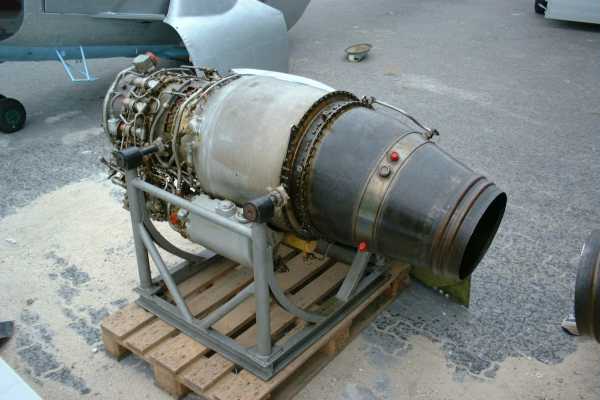 |
Once again one of the engines.
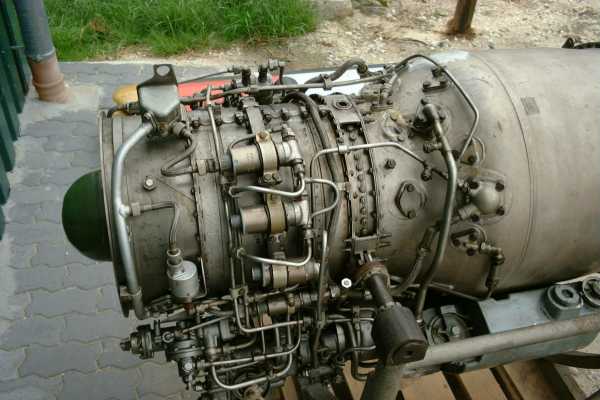 |
That’s the compressor/FCU end of the second engine. The condition of this unit is slightly less good than the other’s which made me negotiate a lower price. But there’s nothing to worry about, with a little cleaning and touching up the engine can be brought to a nice finish again. Anyway there are no signs of corrosion on any of the two engines. Only concern is that a few nicks (foreign object damage, FOD) in the first compressor stage must be repaired. This can be considered common to gas turbine engines and, unless the damage isn’t beyond the repair limits, can be accomplished without the need of replacement blades. I hope I’ll get the logs and documentation for these engines soon because it was promised that we will get the papers with the enigine, but actually they forgot them...
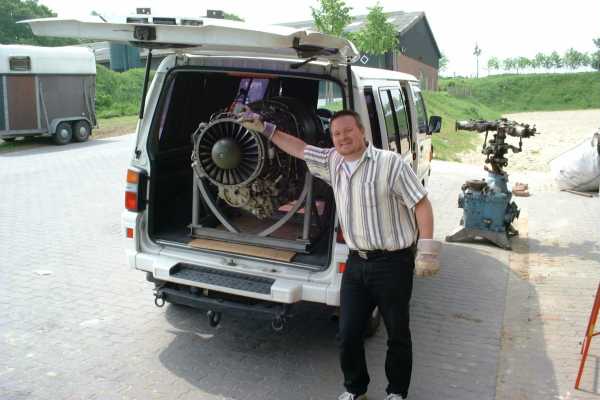 |
Engine finally loaded and Jürgen is happy :-). At the right there’s the rotor gear box and rotorhead assembly of the Mi-2.
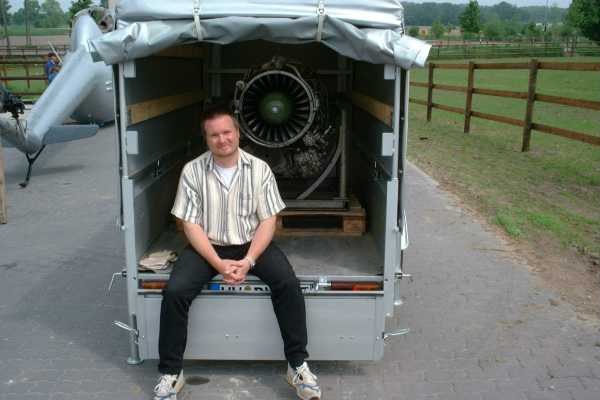 |
The other engine is on the trailer. This was a fairly simple task compared to loading the other one in the car.
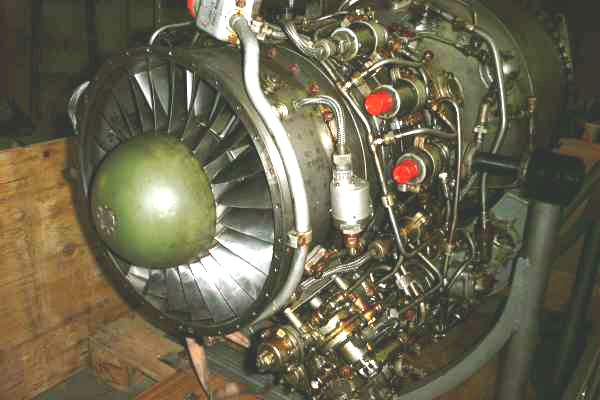 |
Another shot of the engine on the trailer. We can estimate ourselves lucky that both engines came equipped with service stands. Even though this adds considerably to the overall weight, it makes handling the units much easier.
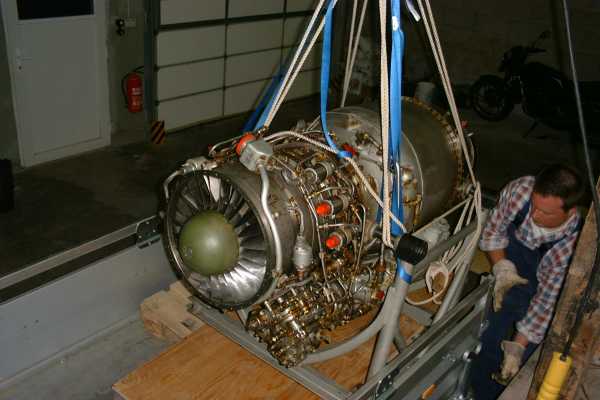 |
After a reasonably good journey home to Jürgen’s place with only minor traffic jam in the “Ruhrgebiet”, we started unloading the the engines. Man can I tell you what a handy tool a fork lift is... Anyway, this time we had to do without. Jürgen has got a small winch that is rated 250kg only. It turned out to be a little on the weak side but at least it was possible to lower the engines using this tool. Lifting would stall the motor. So we found a way to use Jürgen’s trailer, me standing at the front as a counterweight ;-) and operating the crank to lift/lower the auxilary wheel so the engine on the rear of the trailer could be freed after tensioning our lifting harness. Since the compressor contributes most of the weight, the engine tended to lower this end first. So we needed the additional blue belts to keep the engine in balance (the white rope just slipped around the mounts).
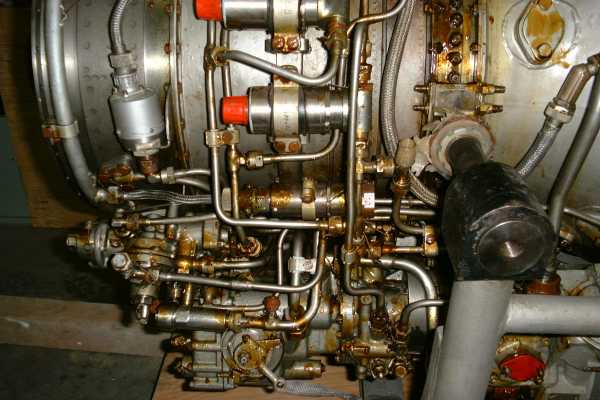 |
And here are some detail photos I took after both engines were unloaded. This is the fuel control unit (FCU) which is mounted on the left lower side of the compressor with the engine viewed from the rear. This unit is mighty complicated since it needs to govern the engine in both APU and thrust mode (probably selected by the solenoid valves in the upper part of the picture). In the lower centre of this photo the throttle control lever is visible.
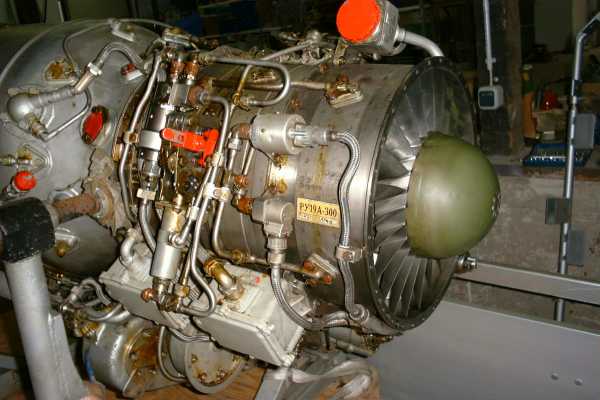 |
That’s the right frontal area of the compressor. The red lever at about the left third of the picture locks the fourth compressor stage airbleed in the closed position for storage. This airbleed system is operated by the hydraulic cylinder to be seen below the aforementioned lever and is used to prevent compressor stall of the first stages during engine startup and acceleration. The two grey boxes below the hydraulic cylinder contain the ignition exciters. It seems that the engine is started by two torch ignitors, but it might also be possible that the devices I identified as such are combined fuel nozzle/spark plug assemblies. I hope I’ll get the documentation soon and that it includes a sectional drawing of the engine so these questions can be answered without the need of disassembly...
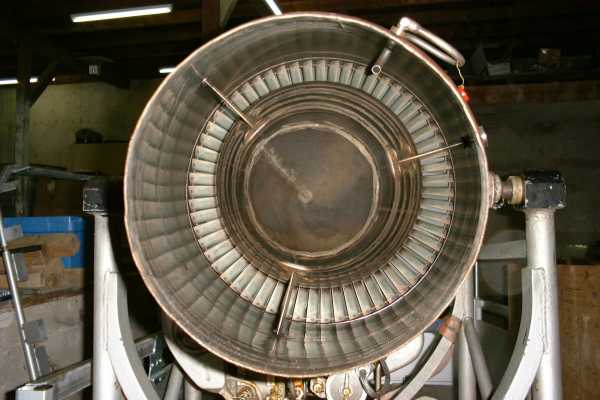 |
That’s a shot up the “business end” of the engine. All the turbine blades seem to be in pretty good condition. One interesting detail about this turbine wheel is that the blade tips are interconnected by small rivets or bolts that are inserted into bores of the blade tips and are equipped with recesses to prevent them from falling out. This is a measure against blade vibrations which can lead to fatigue failure.
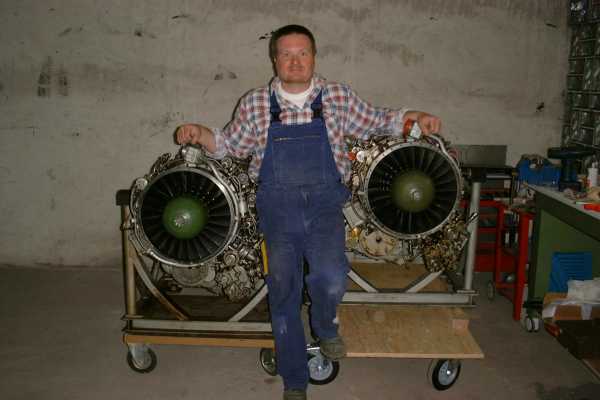 |
Jürgen is tired but happy after an exhausting day...
Here’s an excerpt about this engine from the Soyuz site:
RU19-300 engine:
RU 19 – 300 is a cheap and reliable engine to be installed on training and sporting aircrafts Yak – 30 and Yak – 32. The propulsion class is 900 kilograms. The engine has a seven-stage axial-flow compressor, annular combustion chamber, one-stage turbine and uncontrolled propulsive nozzle. The modification bearing the name RU19A – 300 is used as an auxiliary motor for civil airplanes AN – 24 and its modifications AN – 26 and AN – 30. The engine is adaptable to production and it has a long life. It is still in serial production. State production tests were completed in 1969.
Chief characteristic of the Ru19-300 engine:
|
Here a few pictures of the Mi-2 helicopter follow that the Polish company delivered to the place where we picked up the engines. This place is a pony farm any they also established an “adventure playground”. And that’s where the helicopter will go. Of course the farmer’s kids where already playing in the helo even before the landing gear was mounted, despite of the main rotor gearbox and blades ;-). The Isotov GTD-350 engines had been removed and maybe such units will be the next we’ll be hunting after (cannot afford the western counterpart, the Allison 250...).
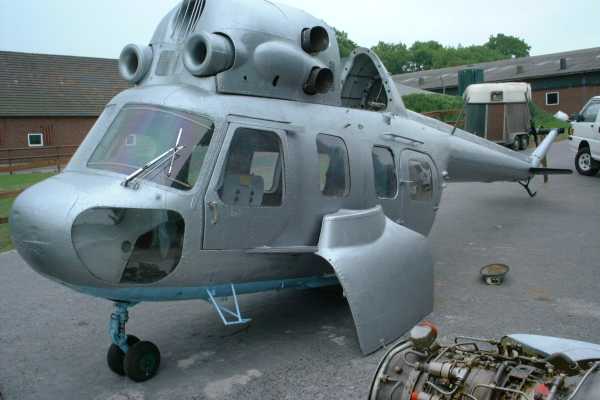 |
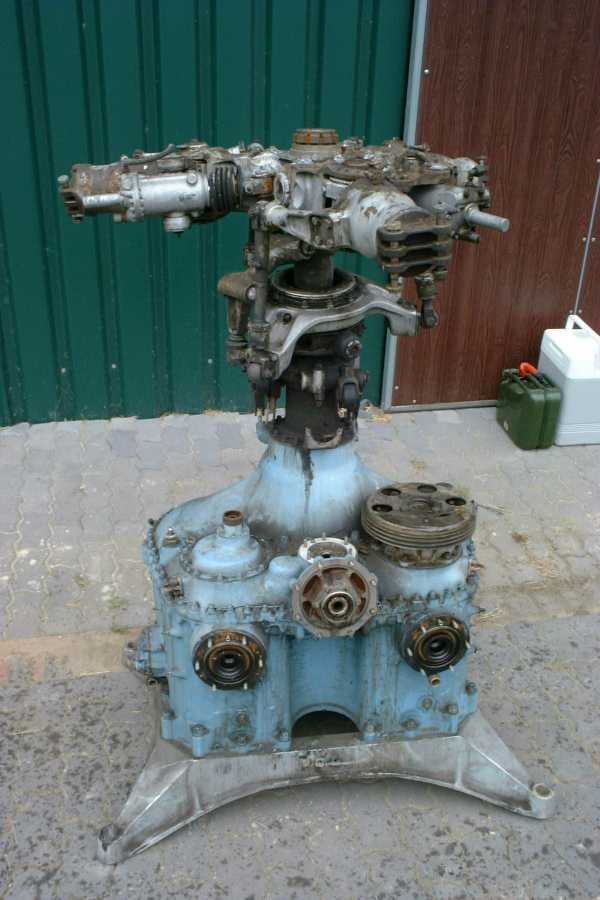 |
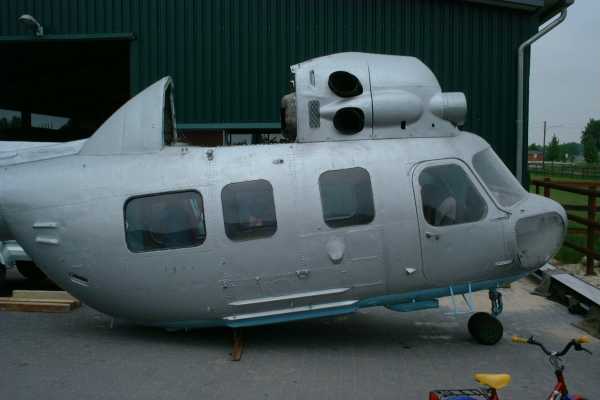 |
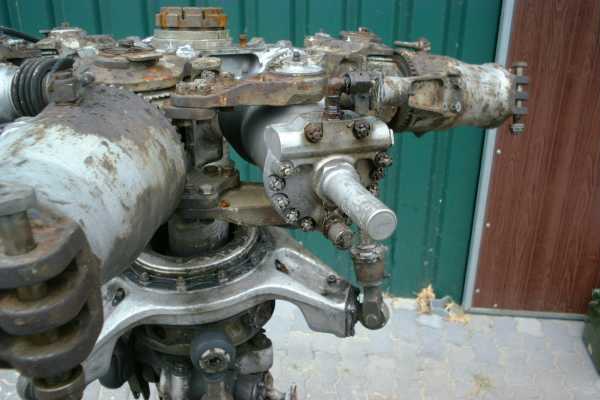 |
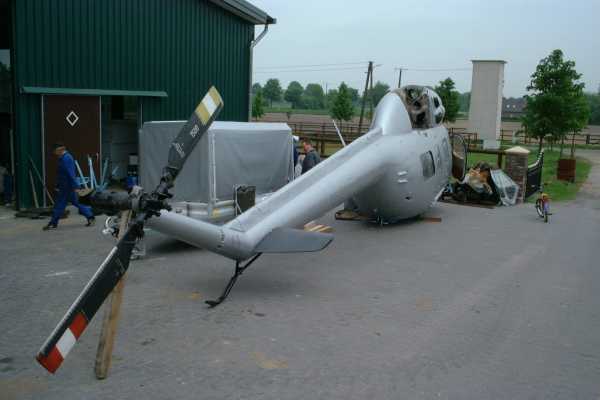 |
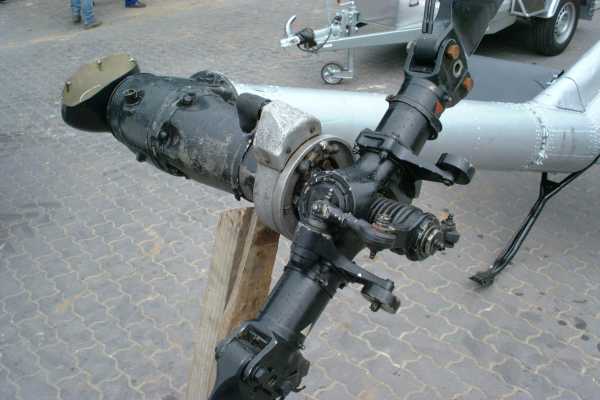 |
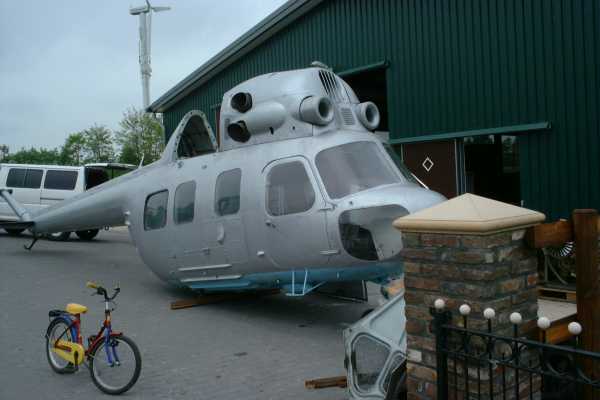 |
Well, what should I say? I wish there had been playgrounds around with “toys” like this when I was a child - but to be honest, what’s actually different today... ;-)
More to follow.